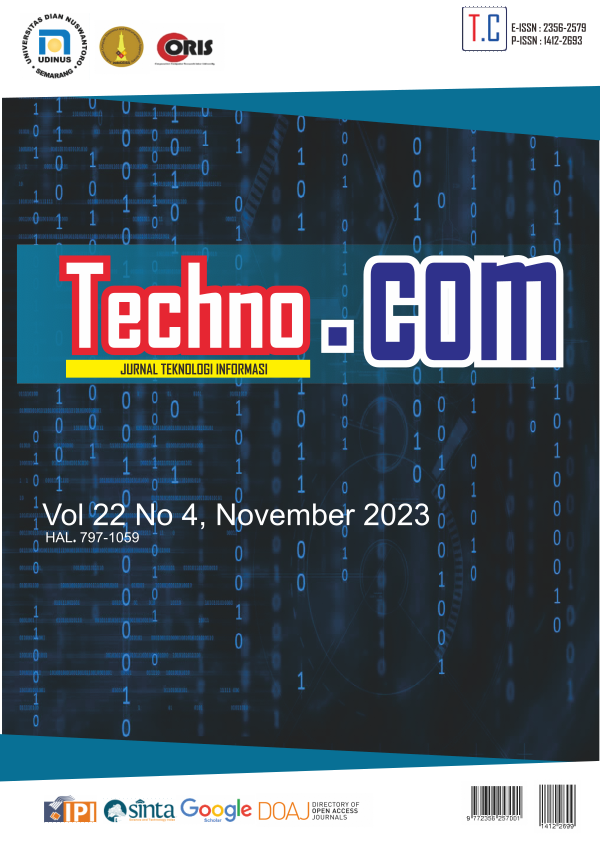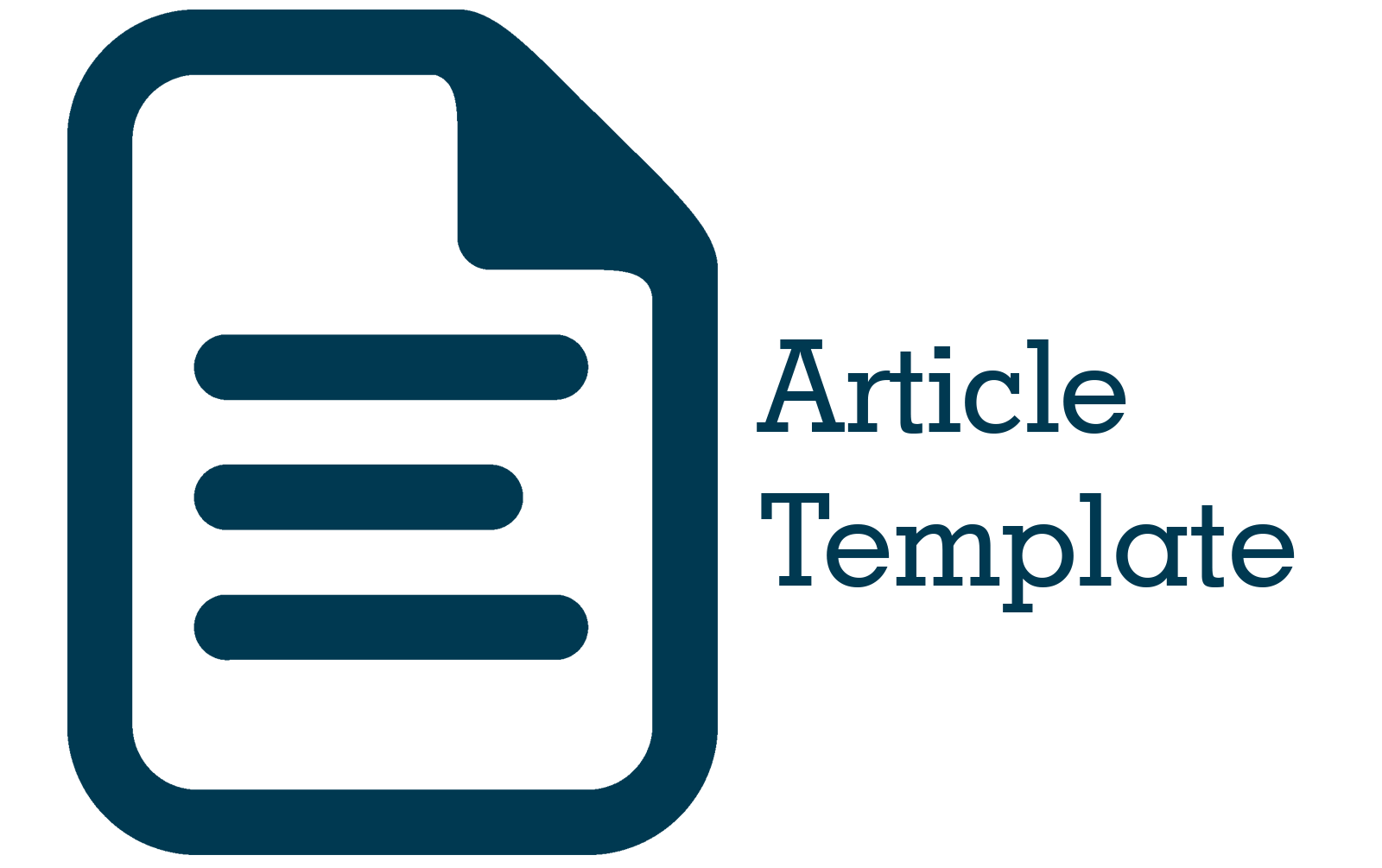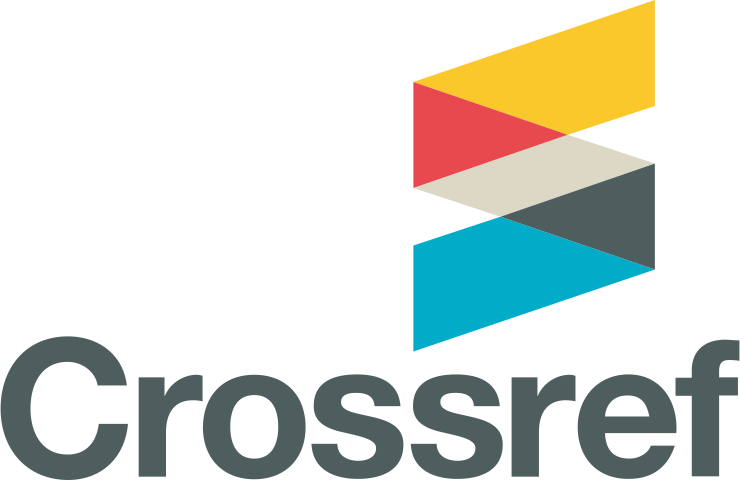Perbandingan Model Machine Learning Terbaik untuk Memprediksi Kemampuan Penghambatan Korosi oleh Senyawa Benzimidazole
DOI:
https://doi.org/10.33633/tc.v22i4.9201Keywords:
Machine learning, korosi, cross-validation, benzimidazole, adaboost regressorAbstract
Penelitian ini merupakan studi eksperimen untuk melakukan penyelidikan inhibitor korosi oleh senyawa Benzimidazole dengan melakukan pendekatan machine learning (ML). Karena korosi menyebabkan banyak kerugian yang timbul karena kehilangan material konstruksi, keselamatan kerja dan pencemaran lingkungan akibat produk korosi dalam bentuk senyawa yang mencemarkan lingkungan. Melakukan pendekatan ML adalah untuk mendapatkan model akurasi yang terbaik sehingga dapat digunakan untuk memprediksi dengan relevan dan akurat terhadap suatu material. Dalam penelitian ini, kami mengevaluasi algoritma ML dengan metode linear dan nonlinear dengan menggunakan metode k-fold cross-validation untuk membantu dalam mengukur performa model ML. Mengacu pada metrik coefficient of determination (R2) dan root mean square error (RMSE), kami menyimpulkan bahwa model AdaBoost regressor (ADA) merupakan model dengan performa prediksi terbaik dari eksperimen yang kami lakukan dari literatur untuk dataset senyawa benzimidazole. Keberhasilan model penelitian ini menawarkan perspektif baru tentang kemampuan model ML untuk memprediksi penghambat korosi yang efektif.References
AS Ariyanto, "Corrosion in Reinforcing Steel and its Prevention (Case Study of the Yos Sudarso Square Ruko Building, Semarang)," vol. 6, 2022.
M. Sugeng, FM Ismail, and JP Utomo, "ANALYSIS OF DIFFERENCES IN CORROSION RATES FROM WEIGHT LOSS AND POLARIZATION TESTING ON PIPE WITH ASTM G59 AND ASTM G31 STANDARD CORROSION TESTING," Tera Journal , vol. 2, no. 1, Art. no. 1, March 2022.
“Aesculus hippocastanum seeds extract as eco-friendly corrosion inhibitor for desalination plants: Experimental and theoretical studies - ScienceDirect.” https://www.sciencedirect.com/science/article/abs/pii/S0167732222011321 (accessed 23 August 2023).
A. MA'RUF, ““OPTIMIZATION OF MAIN DECK HANDLING AGAINST CORROSION ON BOARD THE SHIP MV. BELIC MAS," diploma, POLYTECHNIC OF SEALING SCIENCES SEMARANG, 2022. Accessed: 3 July 2023. [Online]. Available at: https://library.pip-semarang.ac.id
M. Akrom, "INVESTIGATION OF NATURAL EXTRACTS AS GREEN CORROSION INHIBITORS IN STEEL USING DENSITY FUNCTIONAL THEORY," Journal of Physics Theory and Applications , vol. 10, no. 1, Art. no. 1, Jan 2022.
MAS ISLAM, "ANALYSIS OF THE INFLUENCE OF VARIATIONS OF NICKEL COATING HOLDING TIME ON THE THICKNESS AND RATE OF CORROSION IN ASTM A36 STEEL," undergraduate_(S1), Nahdlatul Ulama Sunan Giri University, 2022. Accessed: 3 July 2023. [Online]. Available at: https://repository.unugiri.ac.id/id/eprint/1774/
R. Napitupulu, J. Daely, R. Manurung, and C. Manurung, "EFFECT OF CHROM ELECTROPLATING TIME ON LOW CARBON STEEL ON HARDNESS, CORROSION RATE AND LAYER THICKNESS," Citra Science Technology , vol. 1, no. 2, Art. no. 2, Jan. 2022, doi: 10.2421/cisat.v1i2.38.
A. Husodo, "OPTIMIZING THE PAINTING PROCESS ON SHIP DECKS TO SLOW DOWN CORROSION," JPB: Jurnal Patria Bahari , vol. 3, no. 1, Art. no. 1, May 2023, doi: 10.54017/jpb.v3i1.76.
Bihan Musab, "ANALYSIS OF NITRO-BENZIMIDAZOLE SENSORS WITH CYANIDE ANIONS: CHEMISTRY MAGAZINE FOR SMA/MA AS A LEARNING SUPPLEMENT ON CHEMICAL BONDING MATERIALS," thesis, Mataram University, 2023. Accessed: 21 August 2023. [Online]. Available at: http://eprints.unram.ac.id/41978/
S. Maharani, NY Haryono, and BD Mariana, "Analysis of the Effect of Concentration of Benomil Fungicide on Sterilization of Tawangmangu Citrus Plant Stem Tissue Culture," Proceedings of Life and Applied Sciences , vol. 1, no. 0, Art. no. 0, 2022, Accessed: 21 August 2023. [Online]. Available at: http://conference.um.ac.id/index.php/LAS/article/view/7846
2027011005 FENDI SETIAWAN, "ISOLATION AND CHARACTERIZATION OF BIOACTIVE COMPOUNDS RESULTING FROM FERMENTATION OF MARINE BIOTA ASSOCIATE ACTINOMYTETES AS FUNGICIDES," masters, LAMPUNG UNIVERSITY, 2022. Accessed: 23 August 2023. [Online]. Available at: http://digilib.unila.ac.id/64940/
I. Panduwiguna, I. Hardiana, SA Ogiuma, and MS Latief, "GERD DISEASE PRESCRIBING PATTERNS IN THE INPATITION INSTALLATION OF XYZ HOSPITAL JAKARTA," KRYONAUT PHARMACY JOURNAL , vol. 2, no. 1, Art. no. 1, Jan. 2023, doi: 10.59969/jfk.v2i1.21.
1717011070 By MITA SEPTIANI, "SYNTHESIS, CHARACTERIZATION, AND APPLICATION OF SCHIFF BASE COMPLEX COMPOUNDS OF 4-(DIMETYLAMINO)BENZALDEHYDE AND ANYLYNE WITH Mn(II) COMPLEX AS SENSITIZER IN DYE SENSITIZED SOLAR CELL (DSSC) (Thesis)," 2021 http://digilib.unila.ac.id/60959/ (accessed 27 August 2023).
MA Quraishi, DS Chauhan, and VS Saji, “Heterocyclic biomolecules as green corrosion inhibitors,” Journal of Molecular Liquids , vol. 341, p. 117265, Nov 2021, doi: 10.1016/j.molliq.2021.117265.
D. Prasad, R. Singh, Z. Safi, N. Wazzan, and L. Guo, “De-scaling, experimental, DFT, and MD-simulation studies of unwanted growing plant as natural corrosion inhibitor for SS-410 in acid medium,” Colloids and Surfaces A: Physicochemical and Engineering Aspects , vol. 649, p. 129333, Jun 2022, doi: 10.1016/j.colsurfa.2022.129333.
M. Akrom et al. , "QSPR-Based Artificial Intelligence in the Study of Corrosion Inhibitors," JoMMiT : Journal of Multi Media and IT , vol. 7, no. 1, p. 015–020, Jul 2023, doi: 10.46961/jommit.v7i1.721.
"Machine Learning Understanding and How it Works - Nurdin Hamzah University." https://unh.ac.id/?p=1322 (accessed 26 December 2022).
M. Akrom and T. Sutojo, “Investigation of QSPR-Based Machine Learning Models in Pyrimidine Corrosion Inhibitors,” Exergy , vol. 20, no. 2, Art. no. 2, Jul 2023, doi: 10.31315/e.v20i2.9864.
D. Leni, YP Kusuma, R. Sumiati, Muchlisinalahuddin, and Adriansyah, "Comparison of Machine Learning Algorithms for Predicting Mechanical Properties of Low Alloy Steel," Journal of Materials, Manufacturing and Energy Engineering , vol. 5, no. 2, Art. no. 2, Sep 2022, doi: 10.30596/rmme.v5i2.11407.
L. Li et al. , “The discussion of descriptors for the QSAR model and molecular dynamics simulation of benzimidazole derivatives as corrosion inhibitors,” Corrosion Science , vol. 99, p. 76–88, Oct 2015, doi: 10.1016/j.corsci.2015.06.003.
C. Beltran-Perez et al. , “A General Use QSAR-ARX Model to Predict the Corrosion Inhibition Efficiency of Drugs in Terms of Quantum Mechanical Descriptors and Experimental Comparison for Lidocaine,” International Journal of Molecular Sciences , vol. 23, no. 9, Art. no. 9, Jan. 2022, doi: 10.3390/ijms23095086.
D. Leni, "Selection of Optimal Machine Learning Algorithms for Predicting the Mechanical Properties of Aluminum," Journal of Engines: Energy, Manufacturing, and Materials , vol. 7, no. 1, Art. no. 1, May 2023, doi: 10.30588/jeemm.v7i1.1490.
T. Sutojo, S. Rustad, M. Akrom, A. Syukur, GF Shidik, and HK Dipojono, “A machine learning approach for corrosion small datasets,” npj Mater Degrad , vol. 7, no. 1, Art. no. 1, Mar 2023, doi: 10.1038/s41529-023-00336-7.
LS Ihzaniah, "Comparison of the K-Nearest Neighbor Regression Method and Multiple Linear Regression Method on Boston Housing Data," Thesis, 2023. Accessed: 22 August 2023. [Online]. Available at: https://repository.uksw.edu//handle/123456789/29040
D. Rahmawati, T. Kristanto, BFS Pratama, and DB Abiansa, "Prediction of Foreign Travelers During the COVID-19 Pandemic Using Simple Linear Regression Methods," Journal of Information Systems Research (JOSH) , vol. 3, no. 3, Art. no. 3, Apr. 2022, doi: 10.47065/josh.v3i3.1507.
HD Panduwinata, S. Suyitno, and MN Huda, "Weibull Regression Model on Classified Continuous Data," EXPONENTIAL , vol. 13, no. 2, Art. no. 2, November 2022.
“10 Fold-Cross Validation,” MTI . https://mti.binus.ac.id/2017/11/24/10-fold-cross-validation/ (accessed 29 May 2023).
S. Bates, T. Hastie, and R. Tibshirani, “Cross-Validation: What Does It Estimate and How Well Does It Do It?,” Journal of the American Statistical Association , vol. 0, no. 0, p. 1–12, Apr 2023, doi: 10.1080/01621459.2023.2197686.
L. Leng et al. , “Machine learning predicting and engineering the yield, N content, and specific surface area of biochar derived from pyrolysis of biomass,” Biochar , vol. 4, no. 1, p. 63, Nov 2022, doi: 10.1007/s42773-022-00183-w.
T. Zhu, S. Li, L. Li, and C. Tao, “A new perspective on predicting the reaction rate constants of hydrated electrons for organic contaminants: Exploring molecular structure characterization methods and ambient conditions,” Science of the Total Environment , vol. 904, p. 166316, Dec 2023, doi: 10.1016/j.scitotenv.2023.166316.
M. Akrom, S. Rustad, AG Saputro, A. Ramelan, F. Fathurrahman, and HK Dipojono, "A combination of machine learning model and density functional theory method to predict corrosion inhibition performance of new diazine derivative compounds," Materials Today Communications , vol. 35, p. 106402, Jun 2023, doi: 10.1016/j.mtcomm.2023.106402.
U. M. Khaire and R. Dhanalakshmi, “Stability of feature selection algorithms: A review,” Journal of King Saud University - Computer and Information Sciences , vol. 34, no. 4, p. 1060–1073, Apr 2022, doi: 10.1016/j.jksuci.2019.06.012.
“Benchmark of filter methods for feature selection in high-dimensional gene expression survival data | Briefings in Bioinformatics | Oxford Academic.” https://academic.oup.com/bib/article/23/1/bbab354/6366322 (accessed 11 September 2023).
Downloads
Published
Issue
Section
License
License Terms
All articles published in Techno.COM Journal are licensed under the Creative Commons Attribution-NonCommercial 4.0 International (CC BY-NC 4.0). This means:
1. Attribution
Readers and users are free to:
-
Share – Copy and redistribute the material in any medium or format.
-
Adapt – Remix, transform, and build upon the material.
As long as proper credit is given to the original work by citing the author(s) and the journal.
2. Non-Commercial Use
-
The material cannot be used for commercial purposes.
-
Commercial use includes selling the content, using it in commercial advertising, or integrating it into products/services for profit.
3. Rights of Authors
-
Authors retain copyright and grant Techno.COM Journal the right to publish the article.
-
Authors can distribute their work (e.g., in institutional repositories or personal websites) with proper acknowledgment of the journal.
4. No Additional Restrictions
-
The journal cannot apply legal terms or technological measures that restrict others from using the material in ways allowed by the license.
5. Disclaimer
-
The journal is not responsible for how the published content is used by third parties.
-
The opinions expressed in the articles are solely those of the authors.
For more details, visit the Creative Commons License Page:
? https://creativecommons.org/licenses/by-nc/4.0/
















